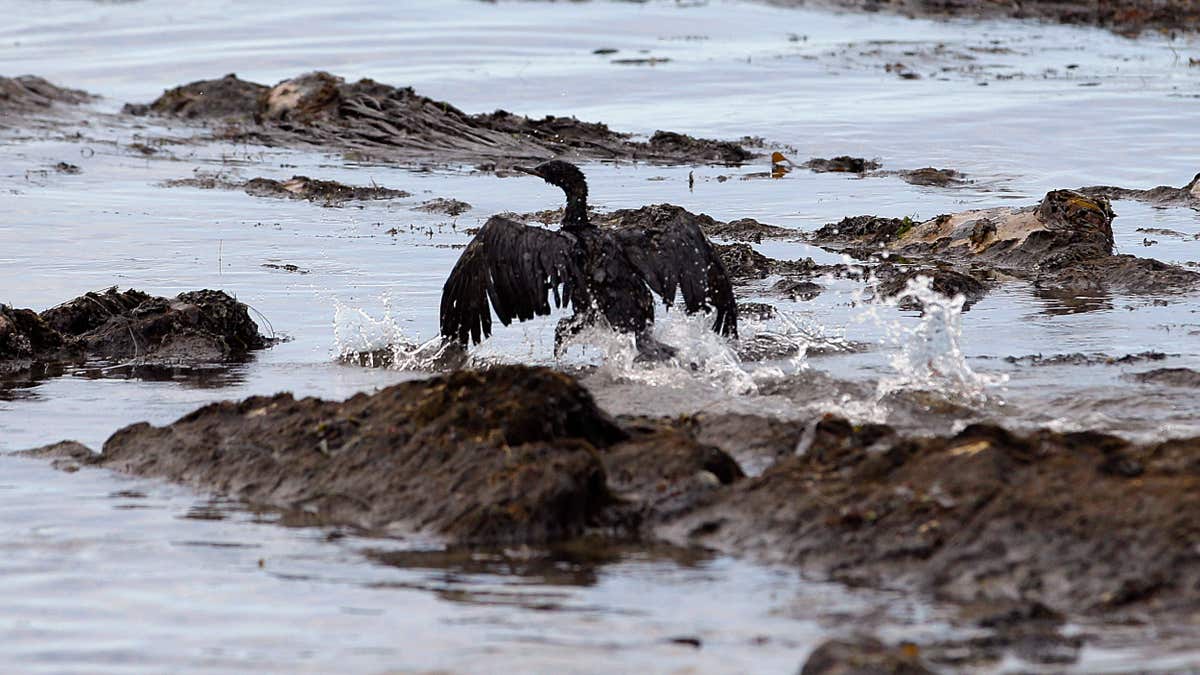
May 21, 2015: File photo, an oil-covered bird flaps its wings at Refugio State Beach, north of Goleta, Calif. (AP)
The time it took to detect and stop an oil spill that fouled sand and dirt on parts of the California coastline last week came under scrutiny from officials Thursday.
California Sens. Barbara Boxer and Dianne Feinstein labeled the response time to the spill “insufficient” in a letter penned to the Pipeline and Hazardous Materials Safety Administration. In the letter, they questioned why the pipeline lacked an automatic shut-off valve, and whether some workers were left on the sidelines while the leak spread.
"We need answers about why this happened, why the response was insufficient and what can be done to prevent another tragic spill like this from happening in the future," said the letter, which was also signed by Massachusetts Sen. Edward J. Markey, a fellow Democrat.
"We are concerned that insufficient preparation may have slowed down the response effort," they wrote.
The letter questions why it took Plains All American Pacific nearly 90 minutes after the oil spill was confirmed to notify the National Response Center, a clearinghouse for reports of hazardous material releases that coordinates responses.
"We are concerned that Plains Pipeline may not have detected this spill or reported it to federal officials as quickly as possible, and that these delays could have exacerbated the extent of the damage to the environment," the senators wrote.
Linda Krop, chief counsel of Environmental Defense Center, said she was at the shore until 10 p.m. the day of the spill and nothing was being done to prevent crude that washed ashore from heading into the sea.
"The response was extremely tardy that allowed oil to get in the water where it will never be fully recovered," Krop said. "Waves were washing oil off the beach and off the rocks and nothing was being done."
At a news conference Thursday afternoon, Plains spokesman Patrick Hodgins did not directly address the company's initial response.
"None of us here today want to have this unfortunate event," Hodgins said. "We're going to address the issue, we're going to investigate it with the federal regulators, we're going to find out what happened and we're going to make it right."
Officials said earlier Thursday that the ruptured section of pipeline had been removed for analysis. Artealia Gilliard of the Pipeline and Hazardous Material Safety Administration said the section will be wrapped in protective insulation before it is sent to an Ohio laboratory for metallurgical testing.
Coast Guard Capt. Jennifer Williams said the effectiveness of the response will be evaluated as part of the investigation. She said it took a while to get the cleanup ramped up because people had to come from out of town.
"During the early stages, people didn't even know how much was on the beach. People were getting to the scene and trying to ascertain how big a problem it was," she said.
The spill marred the same stretch of shoreline as a 1969 oil platform blowout that helped spawn the modern environmental movement. That spill spewed more than 3 million gallons of crude oil into the ocean, spoiled miles of beaches and killed thousands of birds and other wildlife.
The Associated Press contributed to this report.




